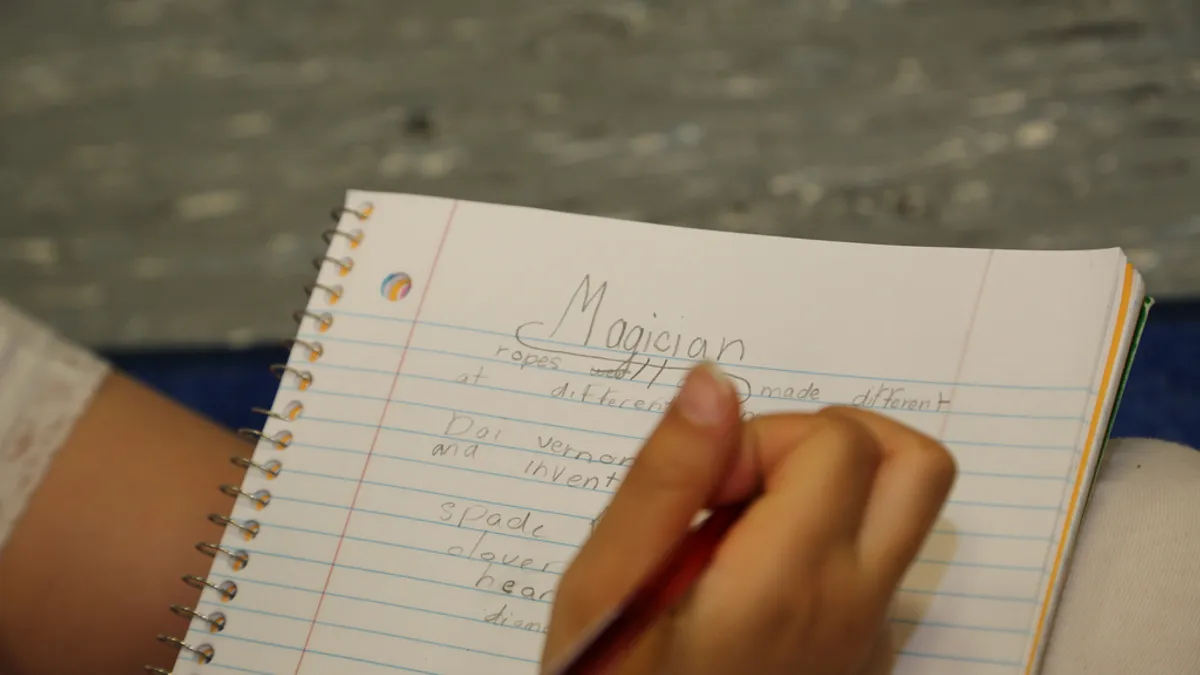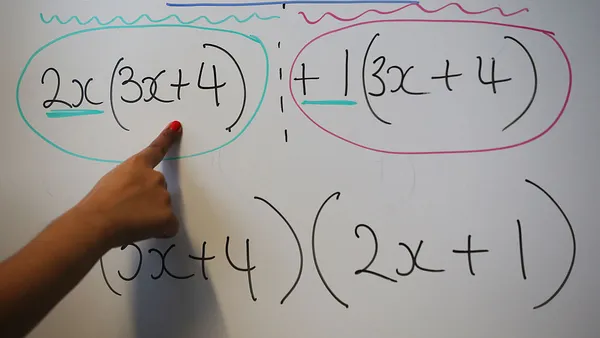Dive Brief:
- Angelina Murphy switched up the way she taught poetry to her 9th-grade English language arts students in Los Angeles, she wrote in Edutopia. Instead of only teaching poets and poetry from the past, she also started using contemporary writings from living poets, which lent itself to topics more relevant to her students' lives.
- To help students connect with the literature, she creates "poetry blind dates" that start with her setting up several stations, each with multiple living-poet poems, around the classroom. Each station has a set of keywords that describe its poems, and students have to go on "dates" with a poem based on the words that resonate with or intrigue them, Murphy writes.
- If those poems aren’t appealing, Murphy allows students to research and find alternative poems that interest them, giving them some ownership in their learning. And, if all else fails, they can even write one, too.
Dive Insight:
Poetry can sometimes feel distant and irrelevant if all students are reading are poems from decades – or even centuries – in the past. But by adding living poets into the mix, students have a chance to connect with the genre and see how it might be relevant to their own lives. Administrators can design curricula to ask students to do more than just study and examine existing poems, but also to encourage them to write their own. This way, not only can students gain authorship over their own ideas, but they can also connect personally to the material, exploring topics and issues that matter to them.
Educators should also look for ways to give students opportunities to learn from each other and allow them to draw on personal issues or how they self-identify. That’s the suggestion of Teaching Tolerance, which, in a paper, encouraged anyone tasked with creating classroom lesson plans and designs to build “curriculum around personal narratives.”
There are also other ways to make these texts jump off the page and catch students' attention. Bringing poetry to life — taking the words off the page and allowing a child to voice them and hear the rhythm, patterns and sounds — can help students connect more deeply to the language. Spoken word, for example, is one method that utilizes this approach.
Spoken word gives students some control over their own learning and taps into the five methods for making learning more meaningful for students, including bringing real-world details to a classroom, encouraging students to learn at their own speed, encouraging children to work together, making what they’re learning feel relevant to them, and sharing resources with other educators to find more tools. Administrators should apply these tools to any subject and look for ways to make the material relevant, whether it's in English language arts or physics, to engage students and encourage them to pursue a well-rounded education.












